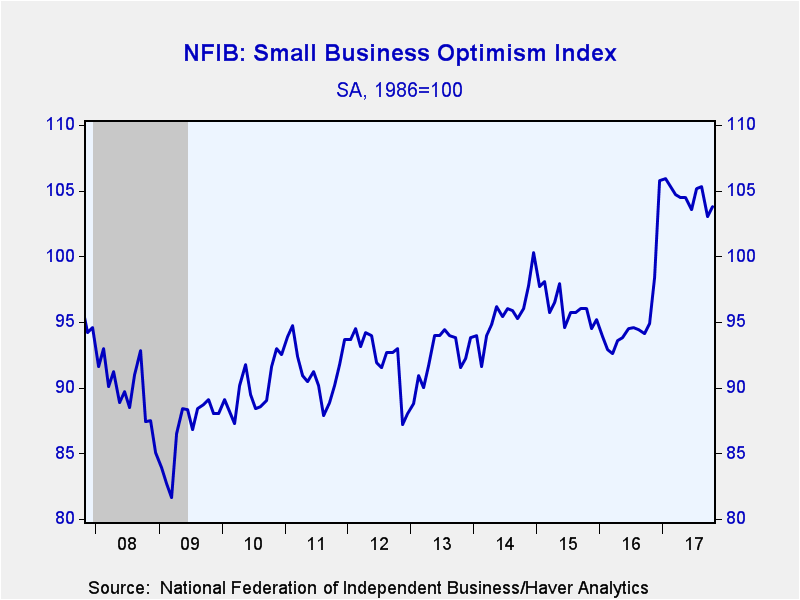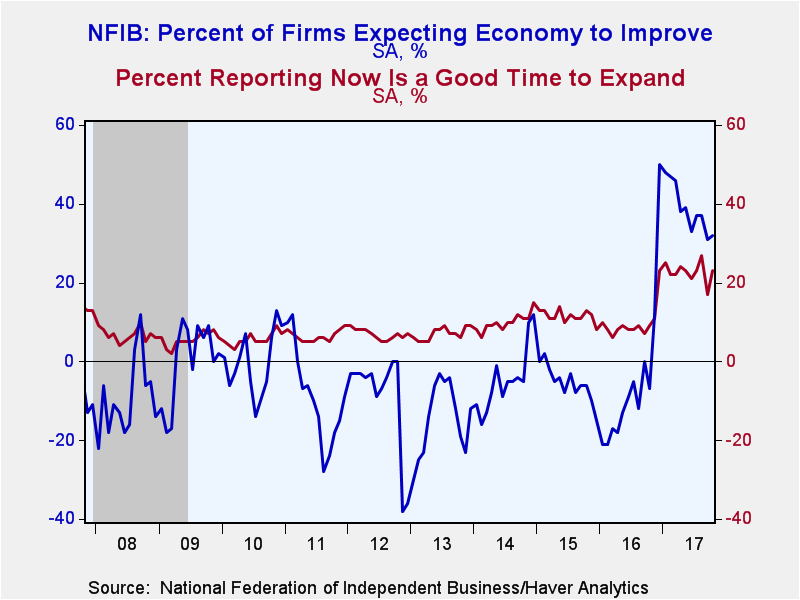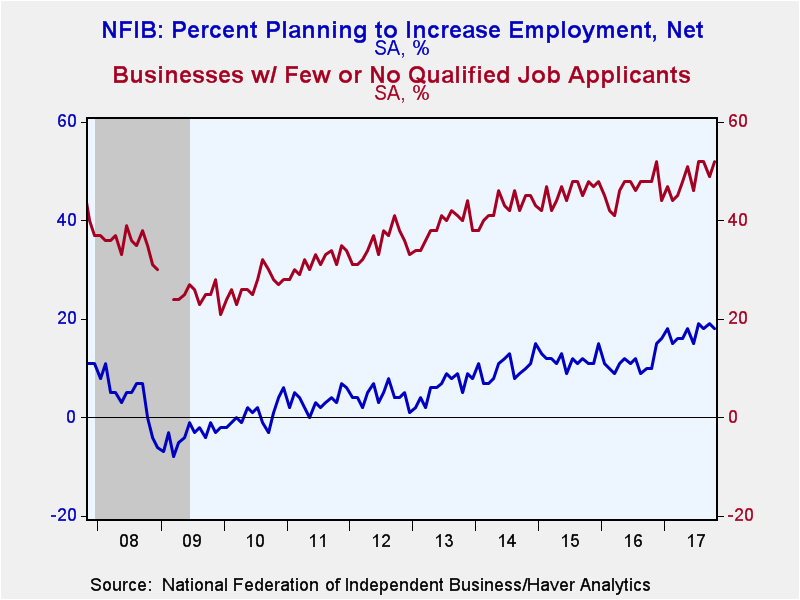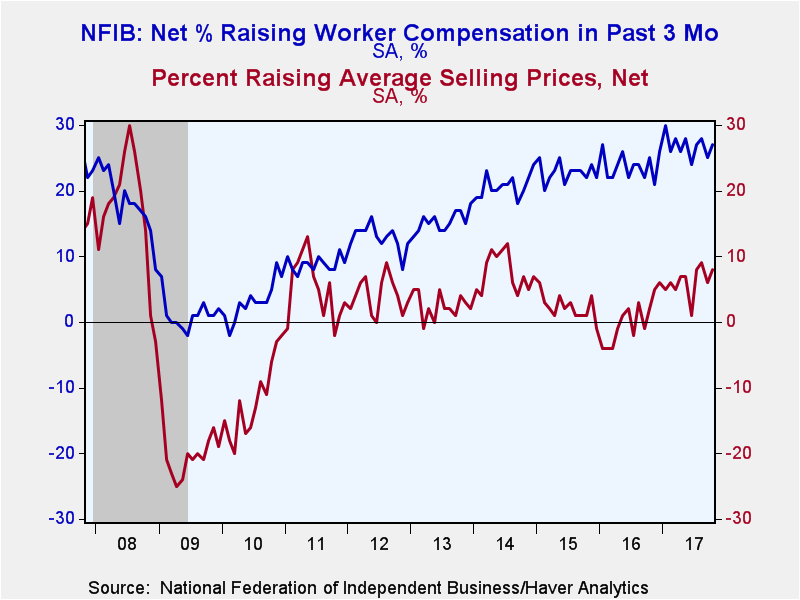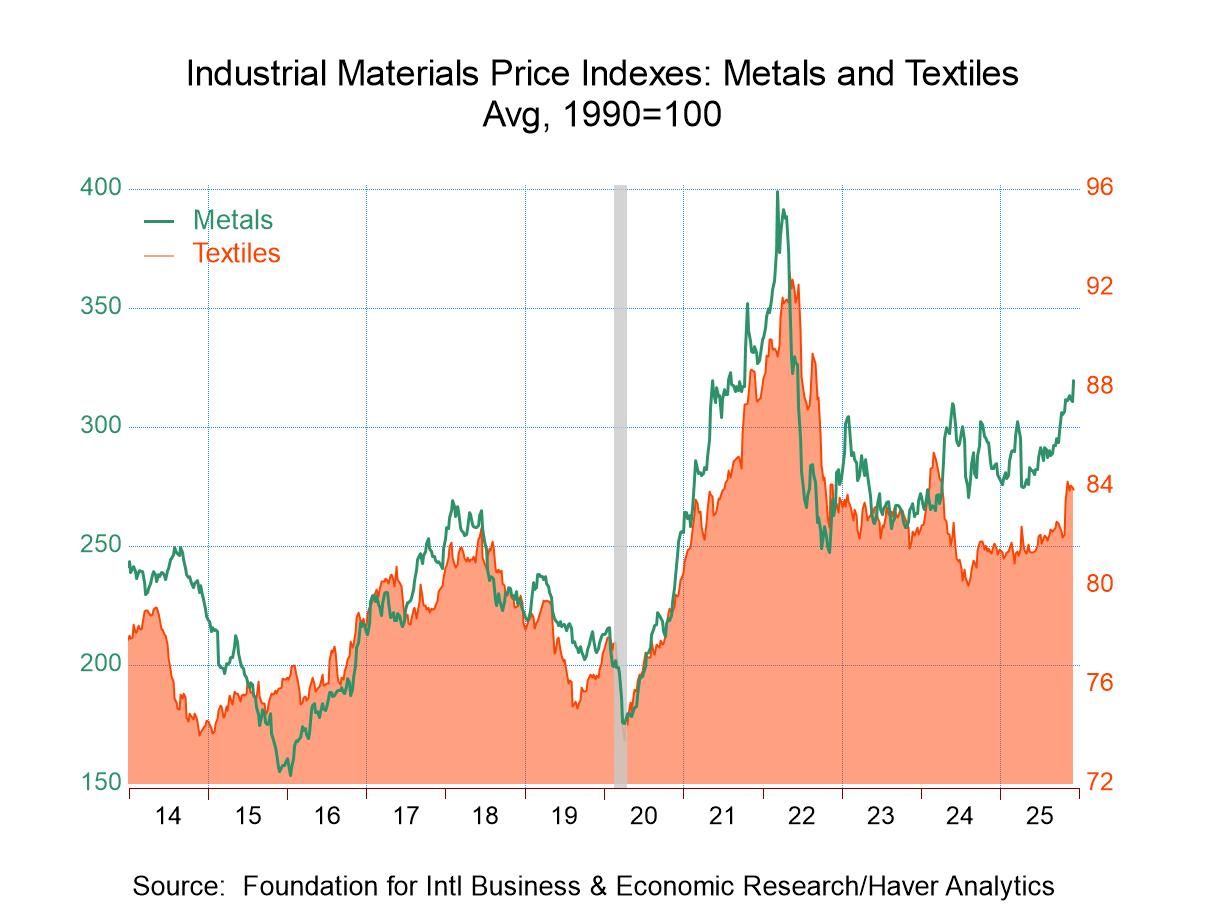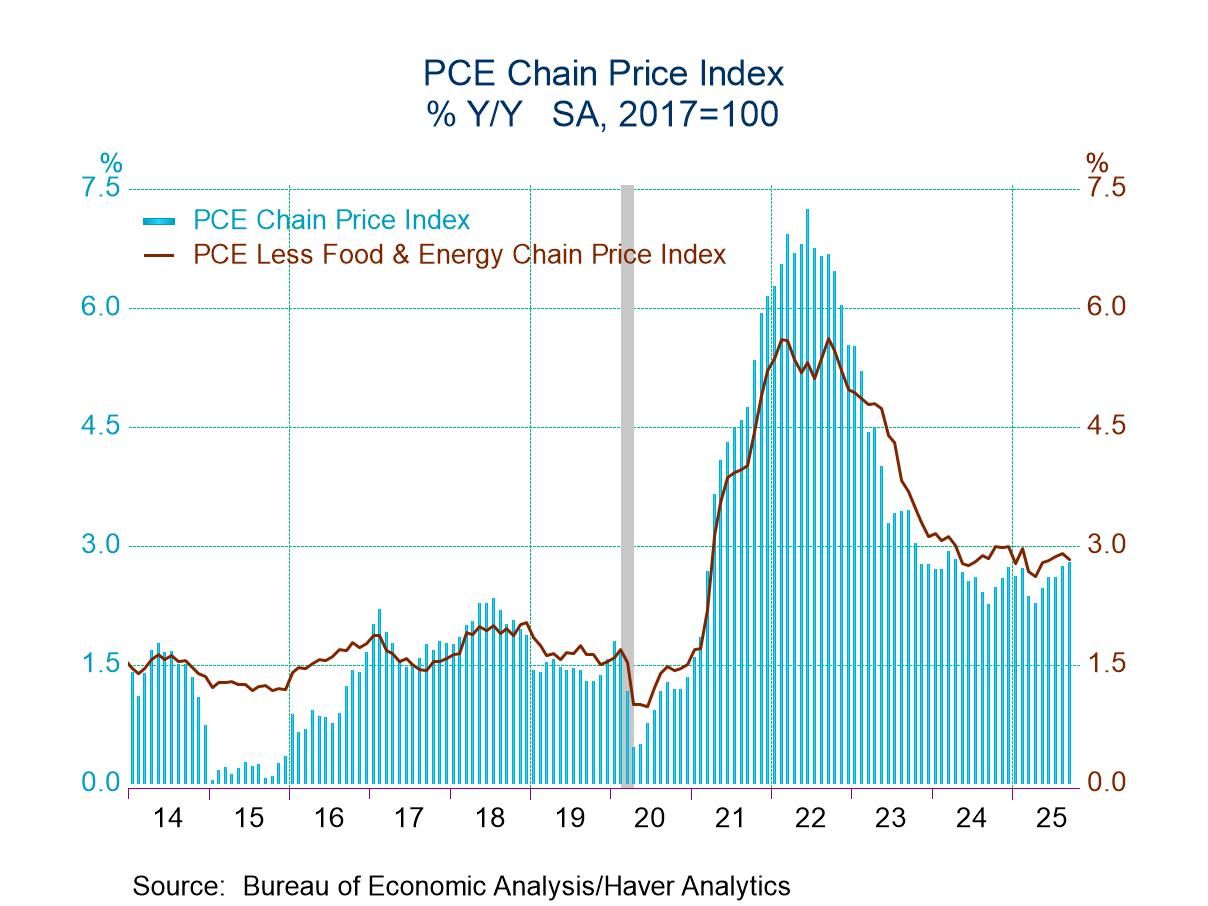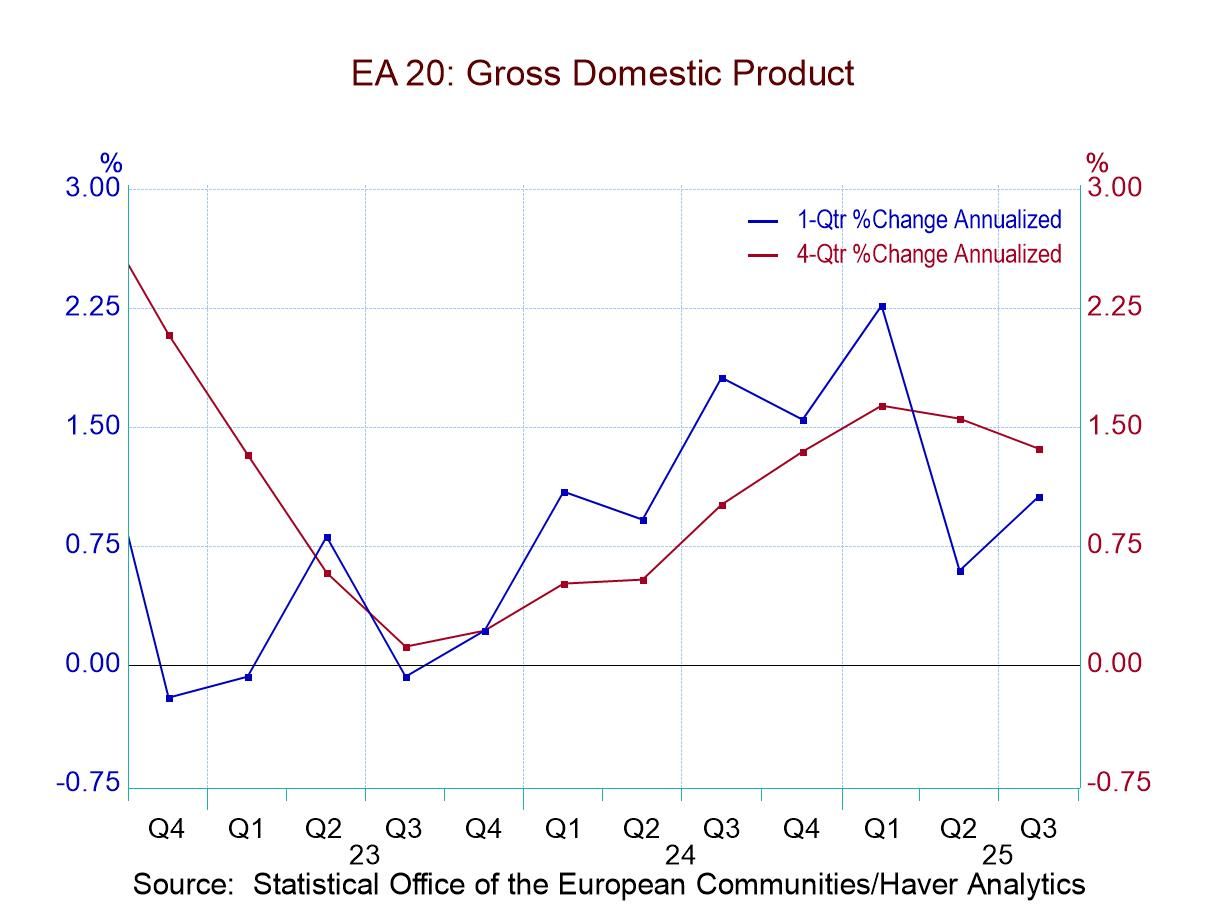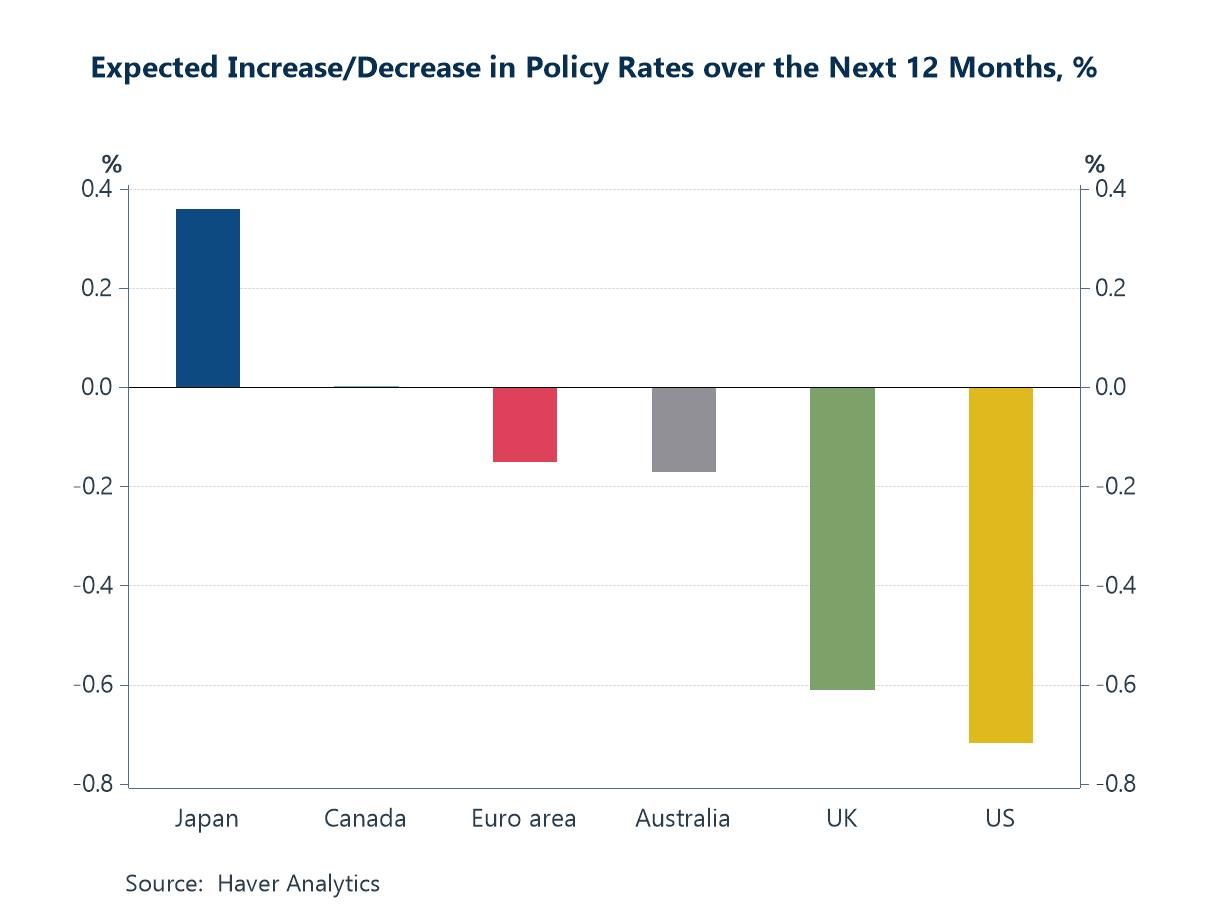 Global| Nov 14 2017
Global| Nov 14 2017U.S. Small Business Optimism Increases
by:Tom Moeller
|in:Economy in Brief
Summary
The National Federation of Independent Business reported that its Small Business Optimism Index rose to 103.8 during October following a September decline to 103.0. The figure remained below its January high of 105.9, but increased [...]
The National Federation of Independent Business reported that its Small Business Optimism Index rose to 103.8 during October following a September decline to 103.0. The figure remained below its January high of 105.9, but increased 19.4% y/y.
An stronger 23% of firms felt that now was a good time to expand the business. That follows, however, a sharp September drop. Twenty-one percent of firms expected higher real sales, up sharply from September and up from just one percent twelve months earlier. A slightly higher 32% expected the economy to improve, still well below last year's high.
Deteriorating to 18% was the percentage of firms expecting to increase employment, though that remained up sharply y/y. A higher 52% of firms found few or no qualified applicants for job openings, up from 48% twelve months earlier.
A slightly higher eight percent of firms raised average selling prices and a strengthened 22% planned to do so. An improved 27% of firms raised worker compensation and a sharply higher 21% planned to do so, the most since December 2015 and up from the 12% low in February of 2016.
A stable 21% of firms indicated that taxes were the single most important problem. A sharply higher 20% felt challenged by the quality of labor, equaling the most since 2000. A greatly lowered 14% reported that government requirements were the largest single problem. A higher 11% of firms reported insurance cost & availability as the largest hurdle, but a lessened ten percent of firms indicated that poor sales were the largest single problem. A sharply lower seven percent reported competition from large businesses as the largest problem. A low six percent felt that cost of labor was the largest single problem. Inflation was reported as the largest problem by a steady two percent of respondents.
Roughly 24 million small businesses exist in the U.S. and they create 80% of all new jobs. The typical NFIB member employs 10 people and reports gross sales of about $500,000 a year. The NFIB figures can be found in Haver's SURVEYS database.
| National Federation of Independent Business (SA, Net % of Firms) | Oct | Sep | Aug | Oct'16 | 2016 | 2015 | 2014 |
|---|---|---|---|---|---|---|---|
| Small Business Optimism Index (1986=100) | 103.8 | 103.0 | 105.3 | 94.9 | 95.3 | 96.1 | 95.6 |
| Firms Expecting Economy To Improve | 32 | 31 | 37 | -7 | -5 | -5 | -5 |
| Firms Expecting Higher Real Sales | 21 | 15 | 27 | 1 | 5 | 8 | 11 |
| Firms Reporting Now is a Good Time To Expand the Business | 23 | 17 | 27 | 9 | 10 | 12 | 10 |
| Firms Planning to Increase Employment | 18 | 19 | 18 | 10 | 11 | 12 | 10 |
| Firms With Few or No Qualified Applicants For Job Openings (%) | 52 | 49 | 52 | 48 | 46 | 46 | 43 |
| Firms Reporting That Credit Was Harder To Get | 4 | 6 | 3 | 4 | 5 | 4 | 6 |
| Firms Raising Average Selling Prices | 8 | 6 | 9 | 2 | 0 | 2 | 8 |
| Firms Raising Worker Compensation | 27 | 25 | 28 | 25 | 24 | 23 | 21 |
Tom Moeller
AuthorMore in Author Profile »Prior to joining Haver Analytics in 2000, Mr. Moeller worked as the Economist at Chancellor Capital Management from 1985 to 1999. There, he developed comprehensive economic forecasts and interpreted economic data for equity and fixed income portfolio managers. Also at Chancellor, Mr. Moeller worked as an equity analyst and was responsible for researching and rating companies in the economically sensitive automobile and housing industries for investment in Chancellor’s equity portfolio. Prior to joining Chancellor, Mr. Moeller was an Economist at Citibank from 1979 to 1984. He also analyzed pricing behavior in the metals industry for the Council on Wage and Price Stability in Washington, D.C. In 1999, Mr. Moeller received the award for most accurate forecast from the Forecasters' Club of New York. From 1990 to 1992 he was President of the New York Association for Business Economists. Mr. Moeller earned an M.B.A. in Finance from Fordham University, where he graduated in 1987. He holds a Bachelor of Arts in Economics from George Washington University.


